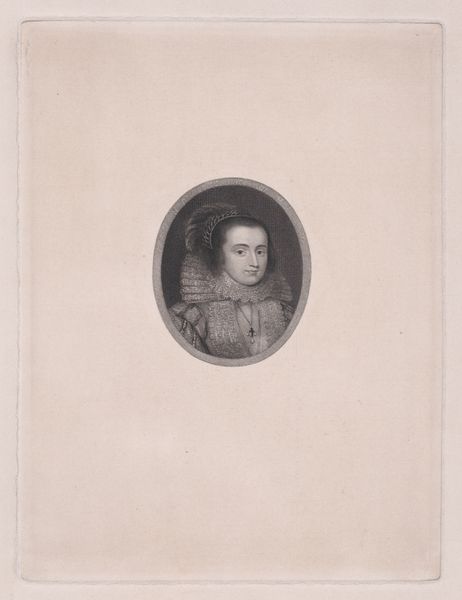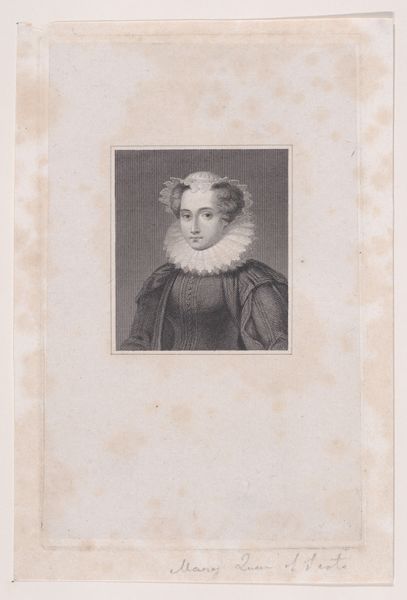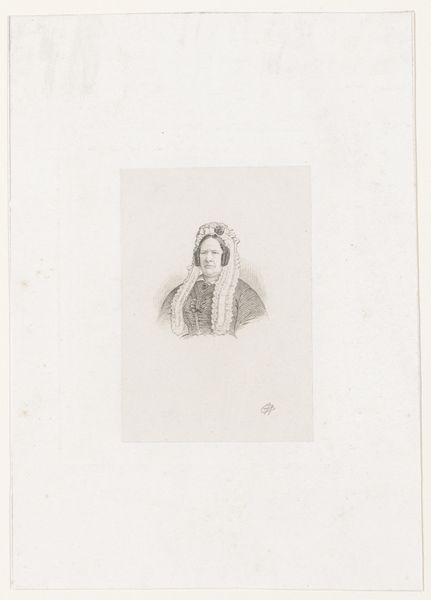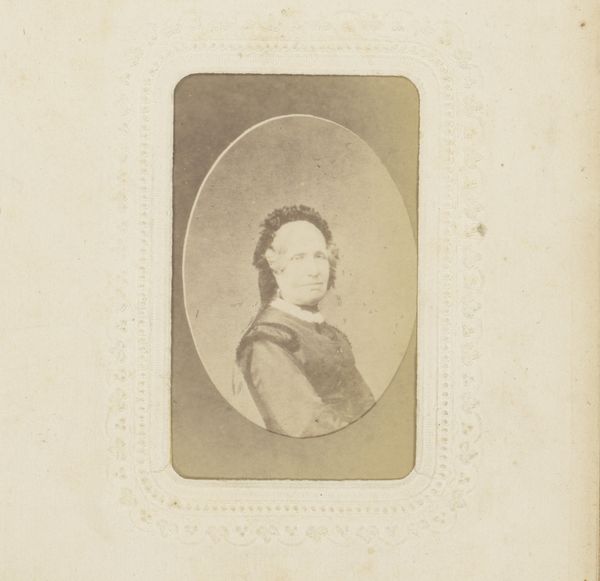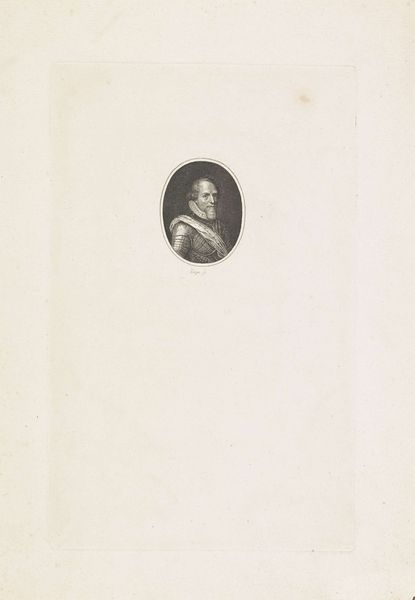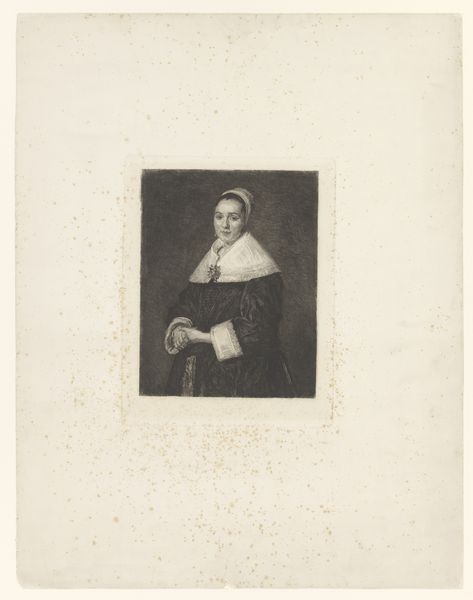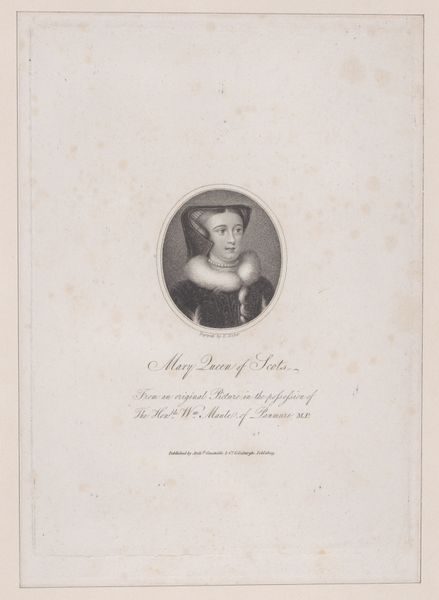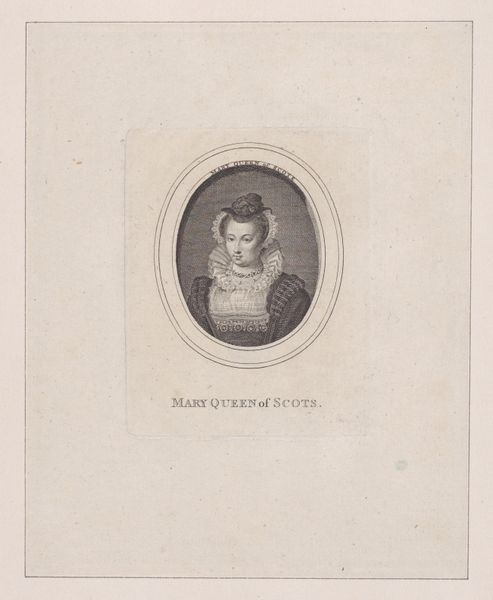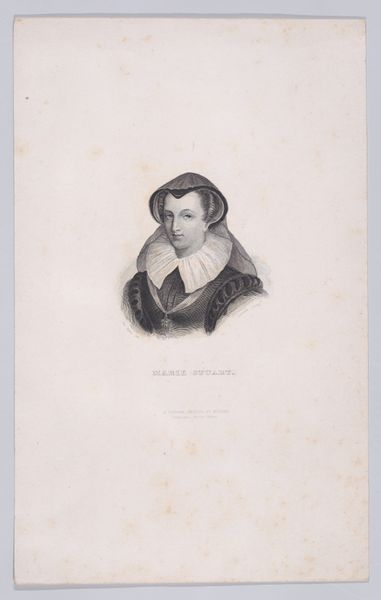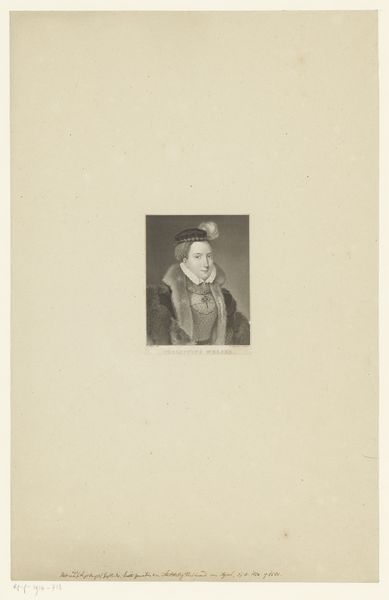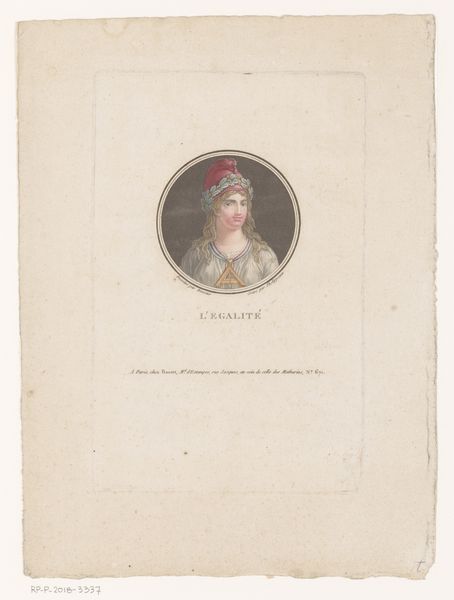
drawing, tempera, print, watercolor
#
portrait
#
drawing
#
water colours
#
tempera
# print
#
watercolor
Dimensions: Plate: 8 1/16 × 6 in. (20.5 × 15.2 cm) Sheet: 14 3/4 × 9 1/2 in. (37.4 × 24.2 cm)
Copyright: Public Domain
Editor: Here we have a delicate portrait of Mary, Queen of Scots, created sometime between 1825 and 1875 using watercolor, tempera, and perhaps printmaking techniques. It’s quite small, and feels… removed, almost like a distant memory. What historical echoes do you hear when you look at this? Curator: I see the complicated and, frankly, romanticized view of Mary perpetuated by nineteenth-century artists. Note the historical distance: this isn’t a contemporary rendering, but a Victorian reimagining. Why *now* depict her? Consider the 19th-century fascination with tragic heroines and national identity. Does this portrayal glorify or lament her fate? Editor: I suppose both, maybe? She seems idealized, almost ethereal, but the muted colors hint at sadness. How much does this artwork reflect historical fact versus Victorian sensibilities? Curator: It's less about strict historical accuracy and more about crafting a particular narrative for a Victorian audience. Look at the costuming; how closely does it match 16th-century portraits of Mary? The presentation— the framing, the medium—it all contributes to how Victorians publicly remembered Mary, which involves nationalistic desires. Do you notice that she is enclosed in a circle? Why do you think the artist would have presented the portrait this way? Editor: It’s like placing her on a pedestal, but one that contains her... Perhaps her life felt trapped. It gives her importance but maybe it’s to highlight the limits and vulnerability surrounding the idea of royalty and female rule in a Victorian context. Curator: Precisely! The image encapsulates those limitations and projects values onto this complex queen, values concerning gender roles and expectations surrounding political life. It is less a reflection of the real woman and more a study on how a culture grapples with gender, history, and national memory. Editor: I’ve certainly never thought about how art can do that! Thanks for unpacking it for me!
Comments
No comments
Be the first to comment and join the conversation on the ultimate creative platform.
